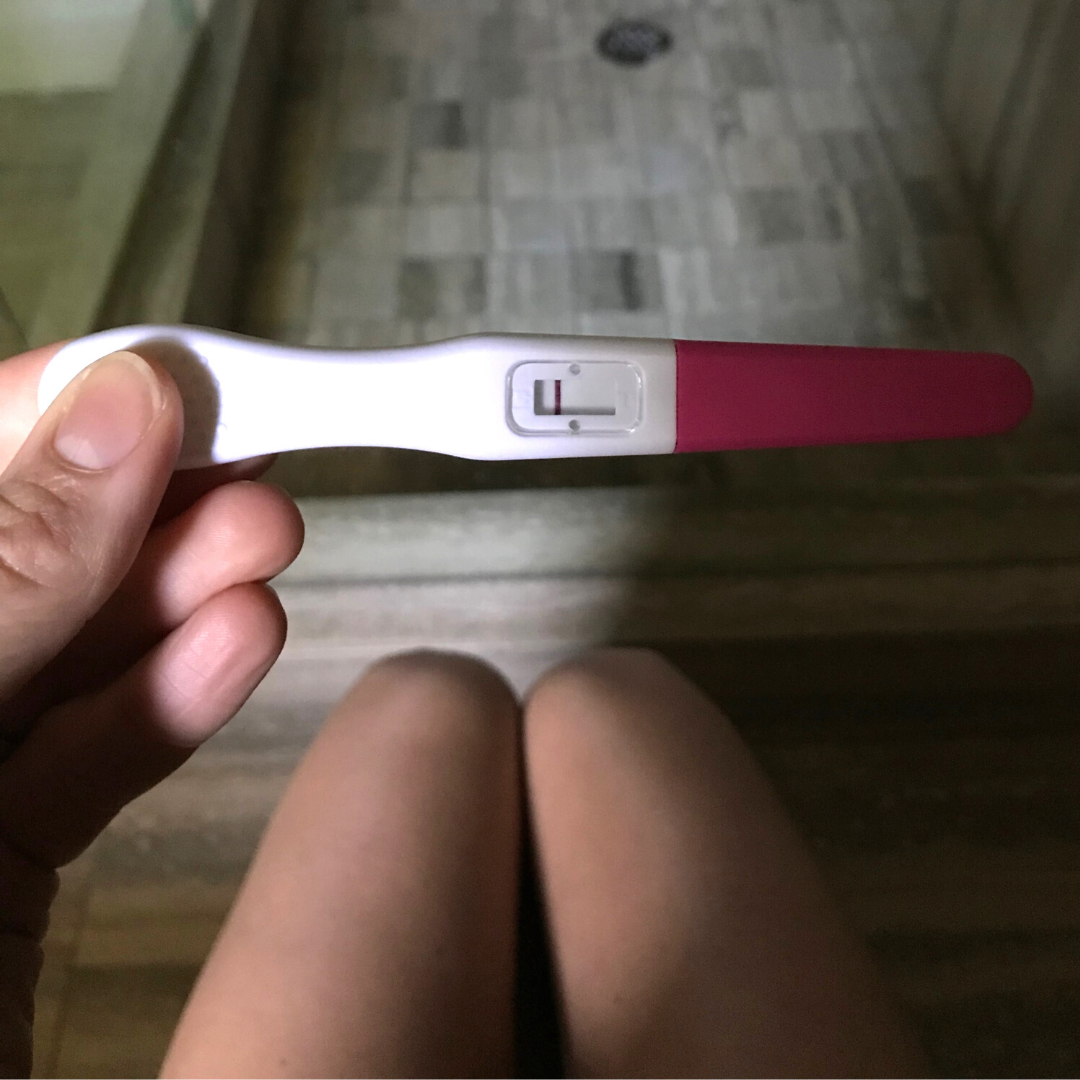“You aren’t getting pregnant. Now what?” | myMindBodyBaby
You and your partner made the exciting decision to start a family! And then… month after month no double lines on your pregnancy test. You aren’t getting pregnant. Now what? If you have been trying to conceive for over 12 months (if you are under 35), or over 6 months (if you are over 35) it is probably time to consider speaking with your healthcare provider about your fertility.
What does “trying” mean?
The World Health Organization defines infertility as “a disease of the reproductive system defined by the failure to achieve a clinical pregnancy after 12 months or more of regular unprotected sexual intercourse.” This number drops to 6 months if you are over 35.
Your healthcare provider will ask about the timing and frequency of intercourse. Ideally, you and your partner will be timing intercourse about every other day from roughly cycle day 10 (the tenth day after your period started) to cycle day 20 if you have a somewhat average cycle. Ovulation generally occurs around halfway through your cycle and so this intercourse timing covers a broad window. We have a basic Ovulation Calculator you can use to estimate when you potentially ovulate, however it must be noted that ovulation can vary significantly woman to woman. For a more detailed overview on what happens in your body throughout your menstrual cycle and more precise ways to track ovulation check out our blog on Understanding Female Fertility.
You aren’t getting pregnant. Now what?
Ok, so you’ve tracked your ovulation and timed intercourse to cover your fertile window. You have taken a look at the lifestyle factors that could affect fertility and you’ve been trying for the required amount of time. You aren’t getting pregnant. Now what? If you are like us, you want to know what to expect when you hear the scary “I” word (infertility). Roughly 40% of infertility cases are female factor infertility, 40% are male factor infertility and 20% are unknown. Therefore, both partners can expect a review of their medical history and procedures to investigate the potential cause of your inability to become pregnant. We have put together a general overview of the typical approach to investigating infertility:
-
Initial Appointment with your Healthcare Provider
- Estimated wait time: 1 – 3 weeks
- What to expect: you will explain where you are at in your trying to conceive journey. For example: “we have been trying for 8 months, I’m 36 years old. I roughly know when I ovulate as I have been taking my basal body temperature, and we have been having intercourse every other day for the 5 days leading up to ovulation and the 5 days following ovulation.” At this point, your doctor may ask about questions about your general health and lifestyle, as these can impact fertility and then may recommend seeing a fertility specialist.
-
Fertility Clinic Referral
- Estimated wait time: 1 – 2 months
- What to expect: you will repeat your TTC journey to the fertility specialist. They will review your medical history and likely ask a number of detailed exploratory questions to understand your health and lifestyle. The doctor may ask specific questions about your menstrual cycle: length, duration, the severity of symptoms and the frequency of your cycle. He or she may ask to provide any details you know about you and your partner’s family in terms of inheritable health issues that may impact fertility. Then, a series of blood tests, investigative procedures and a semen analysis will likely be ordered for you and your partner.
- Cycle Day 2 or 3:
- Blood Tests: to check follicle stimulating hormone (FSH), estrogen levels, Anti-Mullerian Hormone (AMH) and infectious diseases (for both you and your partner)
- Internal Ultrasound: to assess the anatomy of your ovaries, uterus and check your antral follicle count
- Cycle Day 5 – 9:
- Hysterosalpinogram: Aka the tubal dye test. This test assesses the inside of your uterus to look for structural abnormalities and your fallopian tubes to look for blockages or abnormalities. This 5-10 minute procedure is performed on an x-ray table, potentially at your doctor’s office or sometimes at a hospital. You will be awake for this procedure and a speculum (like what is used during a pap smear) will be inserted into your vagina. From there, a small catheter will be fed through your cervix to allow liquid containing iodine to enter your uterus and fallopian tubes. This will enable the radiologist to see the shape and structure of your uterus and fallopian tubes. You may experience some cramping and mild discomfort, but you should be fine to drive yourself to and from this appointment (although support is always nice!).
- Sonohysterogram: This is another test to assess the anatomy and lining of your uterus. Likely done at your fertility clinic, a speculum will once again be inserted into your vagina, a catheter fed past your cervix but this time your uterus will be filled with sterile saline. This helps the technician better assess your uterus using an ultrasound transducer. You may experience mild cramping or discomfort, but you should be fine to drive yourself too and from the appointment.
- Cycle Days 7 until you ovulate:
-
- Blood work: You may be asked to have blood work done every few days during this timeframe for your clinic to monitor your hormone level changes as your cycle progresses.
- Internal Ultrasound: On the same days you do blood work, you may be required to have an internal ultrasound so the clinic can monitor your lining and follicle growth and determine more precisely when you are ovulating.
-
- Semen Analysis (male partner): early on in the investigation your male partner will provide a semen sample for analysis. The test will look at semen quantity, concentration of sperm, motility of the sperm, and their morphology (what they look like).
- Cycle Day 2 or 3:
Clues in a Fertility Puzzle
The results of these tests may help your healthcare provider to understand why you aren’t getting pregnant. At this point, you may be required to have further testing done to confirm a potential diagnosis. Depending on what the diagnosis is, there may be a variety of different ways to help support your fertility and assist you in becoming pregnant. We will cover some of these conditions in future posts.
If these results come back within the normal range you may fall into the “unexplained infertility” group. Roughly 1 in 4 couples struggling with infertility are diagnosed with unexplained infertility. This means:
- that you are regularly ovulating
- the anatomy of your uterus and fallopian tubes appears normal
- your blood tests were all in the normal range
- your partner’s semen test did not show any concerns.
We know this can be a very frustrating diagnosis. Both Michelle and I fell into this group and we were each very frustrated – we wanted something to “solve” and this diagnosis did not point to anything.
Next Steps
With unexplained infertility, your fertility specialist may give you a few different options:
- Cycle Monitoring: you may choose to have your cycle monitored at the clinic for a few months. This can ensure you are timing your intercourse properly and that your hormone levels and cycle lining continue to fall within normal ranges.
- Medicated Cycle: your doctor may offer the option of trying medication to help support ovulation. This is usually combined with cycle monitoring to ensure you are timing intercourse appropriately.
- IUI: intrauterine insemination may be presented as an option, but many couples opt to try one of the less invasive options early on in their journey.
- IVF: in vitro fertilization is often the last resort for many couples as it is a lengthy, costly option that requires a significant physical, mental, emotional, and financial investment.
We will go into more depth on these various treatment options in future posts.
Other Areas to Explore
There are also some other areas you may want to consider exploring – we have detailed posts about each:
- Egg Health & Fertility
- Fertility Supplements
- Hormone Disrupters
- Fertility Foods
- Lifestyle Factors that Impact Fertility
If you think there are some areas of your lifestyle that could use a few tweaks we have an awesome guide to help you along your journey. This program contains 4 weeks of fertility-friendly meal plans + grocery lists. It also provides easy-to-follow exercise guidance, mindset, and supplement support. This fitness program can be modified for ANY fitness level and squeezed into even the most HECTIC of schedules! Check it out here!
We know this can be a very frustrating time in your life. We hope our site provides some of the support and answers you need to navigate this stage of your journey to pregnancy and beyond. If you have additional questions or need a little more support you can always feel free to reach out hello@mymindbodybaby.com.




